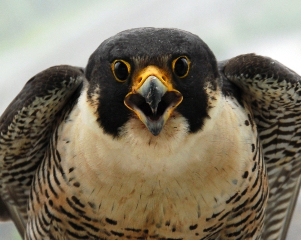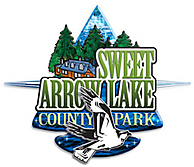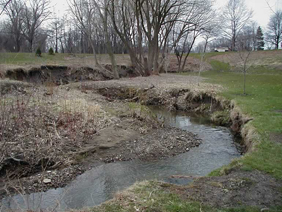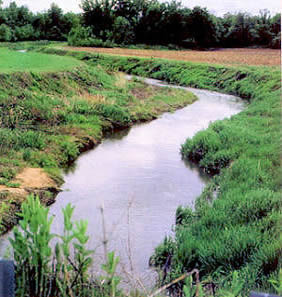
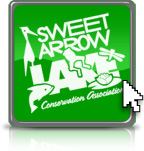 |
SALCA Goes E |
| This will allow us to use money, previously spent on postage, for projects and programs here at the lake. It will also provide us the tools with which to create a better, more informative newsletter for you. The pictures in the e-letter will be in full color and we can now include links that will take you in many different and informative directions. We hope you will enjoy it! Those without e-mail will still receive a printed copy of our newsletter but cost prohibits us from printing it in color. If you have not provided us with an e-mail address, but would like to, please send it to nightowl57@verizon.net Subject: SALCA Newsletter. Thanks for your continued support. ~~~~~~~~~The Prez | |
• What's up with the Lake?
Get caught up with some recent events.
• Natural Remedies the keep the bugs out!
Just the sight of a gypsy moth catapillar munching on your blueberry bushes is enough to make you want to reach for a chemical spray that could wipe it out faster than you could say, “c-ya, sucker!” But please, refrain.
• Riparian Buffers
So what are they and why are they so important?
• Peregrin Falcon Banding Video
Peregrine chick banding on May 27 at the Rachael Carson Building in Harrisburg.
•Dana Harlos’ Celtic Sunrise Punch Fruit Fiesta.
• PA Spring Bird Migration Counts
Our Spring Bird Walk was held on May 9. This also happened to be the date for the annual PA Spring Migration Count (PAMC) which means that the “Nightowl” had to get up early and count all the birds. So, I put those who came along on the walk to work helping me. I can tell you there’s no lack of birds here at SAL.
• Pass it on!
Most people get lots of “stuff” by e-mail. Here’s some stuff we received that looked interesting and possibly useful.
Sweet Arrow Lake Conservation Association
Our Mission:
To preserve Sweet Arrow Lake to ensure that future generations may enjoy the benefits and memories that the lake has provided to us and past generations.
To join, send five dollars for one year’s dues to
SWEET ARROW LAKE CONSERVATION ASSOCIATION
C/O CAROL J. KEESEY
154 WEST LAKE DRIVE
PINE GROVE, PA 17963
Click here for a printable application (in Adobe Reader format).

One of the finest projects done by the Pennsylvania Conservation Corps (PCC) has now been completed. With its durable recycled plastic decking, built in benches, and observation deck overlooking the spillway the new boardwalk allows visitors to travel from the Clubhouse grounds to the Waterfall in style. Great job! The crew is now tackling their next project. A new permanent bathroom next to the Clubhouse pavilion. This much needed convenience will have three separate compartments, flushing toilets, and running water.
The native trees planted last season have survived the winter and are doing well. These trees are available to be claimed as commemorative trees. You can dedicate a tree in someone’s memory or to honor a special occasion for $150. For more information call 345-8952.
Grover the Groundhog’s prediction was right on the money this year. Grover left his burrow and appeared at our 3rd Annual Groundhog Day Celebration on February 2. He forecasted 6 more weeks of winter and boy did we get it! It got cold in October and just plain stayed frigid. What a long cold winter it was. It sure is good to see those new trees blooming. Thanks to Cathy Mabry for serving up a great Groundhog Day Breakfast buffet, to all the volunteers who helped make the event a success, to Claire Jepson for once again reading her book “Three Cheers for Grover,” and of course to the members of Pine Grove Groundhog Lodge # 5. They ARE the event! Many thanks also to the following sponsors: The Sterling Mansion Bed & Breakfast, Reading, Sunset Markets, Lebanon, Keener’s Poultry at the Lebanon Farmer’s Market, Pearl Kreichbaum, Margery Mattox, Barbara Leymeister-Jucker, Schuylkill County Parks and Recreation Department, Berger’s Market, Pine Grove, Jersey Acres and Stone Mountain Wine Cellars, Pine Grove, Pop Video, Pine Grove, Chef Tony Weltmer, Moyer’s Flowers & Gifts, Pine Grove, Lehr’s Feed Mill, Pine Grove, Healthy Habits Natural Food Market, Orwigsburg, Judy Zimmerman, Deborah Filanowski, Gabriel Chamber Ensemble, Marc Freleigh, Princess House, Pasta Fresco at the Lebanon Farmer’s Market, Barry’s Train Shop, Elizabethtown.
We had a full house on March 22 for the Celtic Sunrise concert. Members of the trio Christy Jefferson, Agnes Maurer, and Kathy Miller turned in a top shelf performance with folk music from Ireland, Scotland, Wales, Cape Breton, and Brittany. Proceeds from the concert benefited the Red Creek Wildlife Center. The center rehabilitates injured and orphaned animals. Director, Peggy Hentz, was also on hand with some of her feathered friends. At the conclusion of the program, several rehabilitated Screech Owls and a Red Tailed Hawk were released on the Clubhouse grounds. Thanks to all who donated the wonderful goodies served at intermission. The hit of the day was the fruit punch made by volunteer Dana Harlos and thanks to Dana for sharing the recipe!
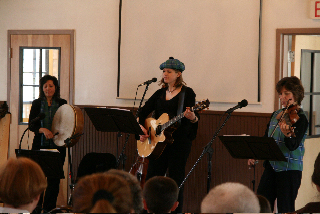
On March 30, we were treated to a very special look at the intricate Ukrainian Art of decorating Pysanky Eggs. Paul Spotts and his daughter made it look easy as they demonstrated the beeswax layering and dying process by which they create these amazing works of arts. We learned that the colors and designs used have different meanings like white for purity and red for happiness. Sun designs signify life and warmth, birds bring fulfillment of wishes, and diamonds symbolize knowledge. If you are interested in learning how to create Pysanky Eggs, Paul and his wife Donna conduct annual March classes at St Michael’s Church, Frackville and they sell their creations by appointment at their shop in Frackville. You can contact them at 570-874-3777.

SALCA conducted the 34th Annual Seedling Sale this year in cooperation with the Schuylkill Conservation District. It was a successful fundraiser and all proceeds will be used for projects and programs here at the lake. The seedlings were really nice this year and those who purchased them got a quality product for a reasonable price. Thanks to Porcupine Pat for his help with the transition, to the Master Gardeners who color coded the different species and were there to answer questions on pickup day, and to Mrs. Hinderliter’s class from Schuylkill Haven High School for doing a great job sorting the seedlings into orders. Many thanks also, to our wonderful SALCA volunteers who took the orders (thanks Mike) and greeted the customers with their bundles when they came to pick them up on April 25. Everyone’s help was much appreciated!
The lake was, once again, stocked with Trout from the Swatara Cooperative Nursery for the opening day of the season. All ten tagged fish have been caught. The first tagged Trout was turned in by David Haubenstine who netted the $50 first prize donated by Northern Swatara Creek Watershed Association. On April 11, Lunker Trout, 20 inches or more in size were also placed in the lake by the Northern Swatara Creek Watershed Association. NSCWA sought donations of $20 per fish with which to purchase the Lunkers and got a tremendous response. At least 25 of these whoppers have been caught to date with a report of one weighing in at 6 lbs.
Park Supervisor, Bob Evanchalk, hosted a “Photo Safari” at Sweet Arrow Lake on May 12. Participants stalked the park grounds with digital cameras and captured images that were uploaded to a laptop and projected onto the clubhouse video screen. Favorite photos were selected and narrowed down to two winning shots. The Photo Safari was co-won by Angela Williams and Kelly Stine.
A colorful, perennial Butterfly Garden was planted on the southeast lawn of the Clubhouse by the Schuylkill County Master Gardeners and students from Blue Mountain HS. Fishermen and hikers alike love the new multi-access trail recently completed along the shoreline at the Clubhouse. |
|
 |
This trail funded by the Northern Swatara Creek Watershed Association and the Friends of Schuylkill County Parks will provide easy low impact access to visitors of all capabilities. In conjunction with this project the 2009 Schuylkill Leadership Class funded and helped to construct a patio and retaining wall at the Clubhouse point. This spot, long a favorite for photo opts, is now even more beautiful. |
On May 26, naturalists Tom Powers and Richard Light visited us from Lebanon Co. to present a program on Reptiles of Eastern Pennsylvania. Along with young audience volunteers, “Reptile Man and the Sun Goddess,” they demonstrated how cold-blooded animals use the warmth of the sun to survive and taught us lots of great stuff about these creatures. In addition to their slide presentation, they brought along a Black Rat Snake, a Painted Turtle, and a Gray Tree Frog to show everyone. The frog sat very calmly on a stick as is was passed aroundthe audience for folks to inspect. Good program guys! |
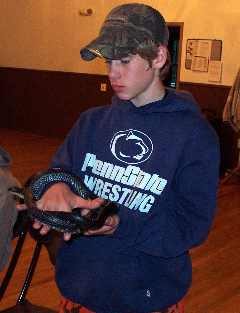 |
And talk about calm! International Grand Master, George Graham, got us all in a Zen mood with a relaxing Tai Chidemonstration at the Clubhouse on May 27. George explained a little about this ancient meditation exercise and then took us through the motions. Tai Chi combines moving meditation and breathing exercises that provide many benefits including, relaxation, stress management, improved focus, coordination, and balance, lowers blood pressure, strengthens the heart, slows down the aging process, and helps to maintain a healthy immune system. This program was a big hit! Watch the county website for info on Tai Chi classes in June and July. George is a man of many talents. You can also check him out as “Elvis on the Swatara” !
There’s always something happening at Sweet Arrow Lake. Several upcoming programs are listed in this newsletter but remember to check the county website at
www.co.schuylkill.pa.us for updates. SALCA will partner with the Pine Grove Historical Society on a Lake Fest and Tour of Lake Homes event for the fall but do not have plans finalized. It will be on October 25. Details will be added to the website.
And that’s What’s Up with the Lake. ~ D.D.
 |
||
|
||
 |
||
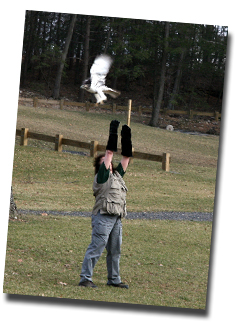 |
|
While many chemical pesticides, including herbicides and fungicides, knock out problem pests, they’re also taking beneficial insects with them, in addition to destroying the health of your soil. And the questionable chemicals used in pesticides affect us, too. Some pesticides have been linked to Parkinson’s disease, leukemia, developmental problems in children, diabetes, and other forms of cancer. Knowing that, I’ll gladly take my garden vegetables chemical-free route. Here’s how to grow robust produce using safer gardening methods:
1. Plant the right crops at the right spots. If your veggie thrives in a well-drained area, don’t situate your garden bed in an area that puddles up when it rains--you’ll be setting yourself up for weak plants more suceptible to disease. If you notice one of your plants is diseased and isn’t easily nursed back to health, you might want to get rid of it before spreads to healthier plants.
2. Cover them up. Floating row covers, which you can buy at most garden supply stores or even online, keep pests, particularly virus-carrying aphids, off your crops while still allowing most of the sunlight to seep in. You can generally use them until temperatures are consistantly above 80 degrees.
3. Plant for protection. Don’t just plant the garden staples, like tomatoes, potatoes, and cabbage. Mix in flowers like marigolds (their roots put off chemicals that keep some pests away), and herbs like dill, whose blooms attracts predatory insects that will devour garden pests. Catnip deters flea beatles, thyme scares away cabbage worms, and mint keeps white cabbage moths away. There are many other combinations that work. Look up companion planting in your favorite gardening book, or visit Organicgardening.com for more free tips.
4. Take matters into your own hands. Some bugs you can simply pick off your plants by hand, and other times, you can blast them off with a strong stream of water from the garden hose. Some gardeners like to use BT, or Bacillus thuringiensis, bacteria to kill certain leaf-eating insect larvae. It is nontoxic to mammals and won’t hurt beneficial insects, but you need to be sure of the pest you’re targeting before you select the specific strain of BT that will kill it. To target aphids, mites, and similar pests, you can make an insecticidal soap by mixing 1-3 teaspoons of mild, unscented soap to a gallon of water, and spray the solution on the bugs every 2 or 3 days for 2 weeks straight.
5. Tamp down weeds. If weeds are what you’re out to conquer, look no further than organic mulches. Place compost, grass, clippings, or shredded bark over shredded newspaper or pieces of cardboard to keep weeds down in selected areas of the garden, particularly the walking paths in between rows. You can also use corn gluten meal, a by-product of corn production, can stop seed germination in weeds if applied before the weeds go beyond the sprout stage. And, of course, you can do some good old-fashioned weed pulling from time to
time, too!
6. Protect yourself. Certain pests, specifically ticks, are out to get you when you’re gardening. Since many (by some estimates, up to 50 percent) of deer ticks in the area carry Lyme disease, you should take preventive measures to avoid getting bitten. Wear light-colored clothing so you can spot a tick, which in certain stages can be as small as a poppy seed. DEET and other chemicals are often recommended for protection, but these can also be harmful to our health and the health of the environment. If you use these products, strictly follow the directions and don’t over apply. Keys, a Maryland company, offers natural insect repellant online, and claims the neem oil scares away ticks. If you’re looking for some action in your yard and you have the space, consider getting a few guinea hens, known as voracious tick eaters. Chickens also peck away at ticks. Some research has also suggested the American beauty berry bush repels ticks, so planting a few in your area couldn’t hurt.
~~ Leah Zerbe is a Rodale online editor.
Get lots of great info by visiting the Rodale website.
![]()
*Note: If you have problems with slugs you can kill them by placing shallow containers of beer around your plants. Apparently, slugs like Happy Hour too but don't know their limit and eventually fall in and drown. (but they die happy)
There's also a new Recycled Glass Mulch product that is supposed to deter slugs. I'm testing it now. It's attractive and comes in a number of different colors, however, it doesn't seem to be widely available yet. I got mine at Close the Loop on Rt. 209, Broadheadsville
One of our local sponsors, Healthy Habits Natural Market, Rt. 61, Orwigsburg, carries, Deet-Free, All Terrain herbal insect repellent. 570-366-2620
|
|
|
|
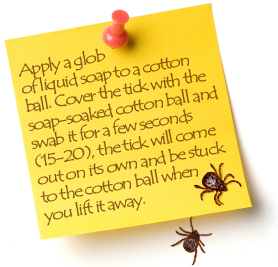 |
|
 |
MOSQUITO SPRAY I was at a deck party awhile back, and the bugs were having a ball biting everyone. A man at the party sprayed the lawn and deck floor with Listerine, and the little demons disappeared. The next year I filled a 4-ounce spray bottle and used it around my seat whenever I saw mosquitoes. And voila! That worked as well. It worked at a picnic where we sprayed the area around the food table, the children's swing area, and the standing water nearby. During the summer, I don't leave home without it. |
|
|
|
|
Lemon Ice: Fruits: |
|
|
SWATARA SOJOURN
Because Sweet Arrow Lake is in the Swatara Creek Watershed, we have become associated with several other groups within the watershed. One of them is the Lebanon County based Swatara Watershed Association. For 21 years the that group has conducted the Swatara Sojourn a 30 mile canoe trip on the Swatara Creek. This year's sojourn began in Pine Grove and ended in East Hanover Twp., Lebanon Co. This event includes food, entertainment, and an overnite stay at a campgrounds. To learn more about it visit www.mbcomp.com/swatara Here are links to some clips from the float which takes place on the 1st weekend in May each year.
|
Attend any environmental conference or lecture with themes ranging from parks, to waterways, to wildlife, or stormwater management and you sure to hear the words “riparian buffer.” So what are they and why are they so important? |
|
|
Riparian buffers are vegetated areas of plants, shrubs, or forests along the banks of streams, lakes, and other bodies of water. They can range in size from a few feet to thousands of acres. They can be existing areas of native growth or areas that have been planted by man. Sadly, thousands of miles of riparian buffers have been lost in Pennsylvania due to development. This wonderful green resource can be extremely beneficial to land, water, humans, and wildlife in a number of ways. Riparian plants slow runoff from precipitation decreasing erosion and allowing the moisture to be absorbed more efficiently into the soil. This is especially important here at Sweet Arrow Lake and along the banks of the Swatara and its tributaries where sedimentation problems exist. This action also allows the plants to absorb more water diminishing flood waters and in some cases catching pollutants that might be present in stormwater. Forested buffers have the greatest filtration capacity soaking up 10 to 15 times more water than lawns. They shade waterways keeping the water temperature lower and increasing dissolved oxygen levels. These higher DO levels are beneficial to aquatic wildlife. Higher water temperature in unshaded areas can increase the growth of algae and other nuisance plants. While trees provide more benefit than grasses and other vegetation, any buffer is better than no buffer at all. A combination of trees, warm season grasses, and other native plants will not only protect a waterway but will provide habitat for both aquatic and terrestrial wildlife. Where wildlife habitat is concerned the bigger the riparian buffer the better. Although any buffer provides habitat those 35 to 100 ft. are very beneficial and 100 to 300 ft. or more on both sides of a waterway significantly increase the quality of the habitat. Agricultural best management practices (BMPs) also support the establishment of riparian buffers through farmlands where planting, harvesting, fertilizer use, and livestock can all contribute to land degradation and pollution of our waterways. Buffers greatly slow and absorb farm runoff that might otherwise carry fertilizers and animal waste into nearby streams. Lawn care is another related issue that has an impact on the health of our water resources. There are 3 million acres of turf within the Chesapeake Bay watershed. An attractive lawn does not have to be mowed excessively or overfertilized. Often lawns are mowed right to the edge of lakes and streams reducing more beneficial riparian plants. For a really interesting guide to healthy lawn care visit www.cbf.org/landscaping Under the “Here’s how” section of the article click on the link for Read CBF’s Healthy Lawns brochure. An example of what you will find in this publication is the following recipe for a “Compost Tea” that has beneficial aerobic bacteria and fungi to feed lawn grass and plants in your garden: |
Before and after Riparian Buffers
Sources: “Riparian Forrest Buffers,” “Healthy Lawns, Healthy Waters,” Chesapeake Bay Foundation, |
|
Peregrine Falcon Banding Video
With a recent notice of programs here at the lake, I included links for Red-Tailed Hawk and Peregrine Falcon nest cams. Some of you wrote to say that you enjoyed those so I thought I would pass along this link to the video of the Peregrine chick banding on May 27 at the Rachael Carson Building in Harrisburg. The photo of the adult Falcon was submitted by PA Game Commission, Wildlife Conservation Education Specialist, Joe Kosack, who was slightly injured when he had a run in with momma Falcon while removing chicks fron the nest. She does not look happy!!!! ~ DD
